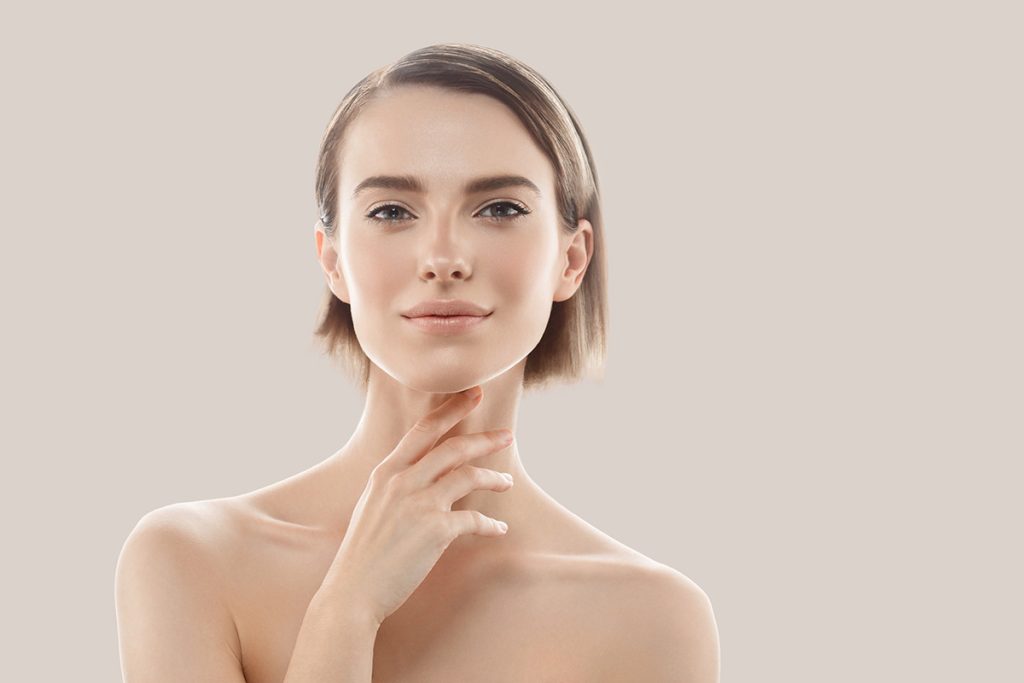Platelet-rich plasma (PRP) is an innovative treatment that harnesses the power of your body’s own healing properties to rejuvenate your skin and hair. This cutting-edge procedure utilizes concentrated blood platelets, cell fragments that typically serve to heal wounds. With PRP, components of these platelets called growth factors can help rejuvenate the skin and restore healthy hair growth.
To learn more about the cost of PRP treatment or any other inquiries, we encourage you to contact Valley Plastic Surgery & Medi-Spa at (410) 628-8200. Our dedicated staff will be happy to assist you and schedule a consultation with Dr. Alyson Wells at our convenient location in Cockeysville. Take the first step towards rejuvenating your appearance and enhancing your confidence with our advanced PRP therapy options. Let us help you unleash the regenerative power within you for a rejuvenated and blemish-free appearance.
How Does PRP Work?
PRP is a highly advanced procedure that incorporates the healing capabilities of your own blood. Since it utilizes components from your own body, it is considered a procedure that is part of a larger branch of science called regenerative medicine. Once a small sample of blood is drawn, it is placed in a device called a centrifuge that separates all its components. The sample will contain separated red blood cells, white blood cells, and plasma.
While plasma is made of mostly water, the rest of it contains vital platelet proteins, small amounts of electrolytes, and molecules that serve immune functions. This platelet-rich plasma contains over 1100 different proteins that have over 1500 “bioactive” factors including growth factors; proteins that signal cell production and remodeling. (1) One of these is the fibroblast growth factor that creates the cells that produce collagen and elastin.
When PRP is administered in the scalp, it promotes full, healthy hair through endothelial growth factor, transforming growth factor β, fibroblast growth factor-2, epidermal growth factor (EGF), vascular endothelial growth factor, and more. These, in particular, allow the hair follicles to grow for a longer period of time. They also stimulate the formation of new blood vessels that provide more blood circulation for these follicles. (2)
Other Uses for PRP Injections
One of the most remarkable aspects of PRP treatment is its versatility. It has been used in various areas of medicine, including orthopedic injuries and skin rejuvenation. In orthopedics, these injections are commonly used to accelerate the healing process of tendon and ligament injuries. (3) Clinicians have also found that PRP can be utilized in improving sexual response in both men and women through its ability to form new blood vessels, a process called angiogenesis.
Benefits of PRP
PRP has been studied as a treatment for multiple skin conditions and cosmetic issues. After receiving Dr. Wells’ PRP injections, you can expect to see:
- Smoother skin
- More even skin tone
- More faded atrophic scars
- Reduction in traverse forehead lines, crow’s feet, and nasolabial folds
- Reduction in large pores
- Sustained and fuller hair growth
- Reduction of undereye bags and periorbital wrinkles
How Safe is PRP?
Clinicians understand that safety is of utmost importance for patients. Although it seems like a newer treatment, PRP has a long history of research. In 1954, researcher C.S. Kingsley coined the term “platelet-rich plasma” to refer to the platelet concentration in blood transfusions. In 1972, platelet concentrate was utilized in surgery to help seal a wound.
Through the 1980s, PRP was effectively used in various procedures, including heart surgery, to prevent blood loss with its healing capabilities. This was also the decade that it was first used in regenerative medicine. As of 2022, no studies have reported significant adverse effects of PRP. Researchers have found the treatment to be safe and effective in part because the plasma itself is collected and administered to the same patient; it is an autologous procedure.
Making Your Results Last
After your PRP session, you may notice tenderness and swelling in the treated area, but this will subside within a few days. You will not need to take time off of work, and you’ll be able to get back to most of your daily routine. In order to maximize your results, you should avoid taking a shower the same day as your procedure or applying makeup and/or creams to the treatment area. For the first 3 days, you should avoid strenuous activities and sun exposure; sweat and temperature changes may interfere with your skin’s healing mechanisms. In addition, you should refrain from drinking alcohol or taking anti-inflammatory medication since it can reduce the platelets’ effectiveness. Alcohol and other blood thinners may lead to more bruising post-procedure.
After your first session, you should wait at least 4 weeks before receiving further treatment. This will allow the growth factors the time it needs to begin rejuvenation.
Most patients benefit from 3 PRP treatments, with results lasting 6 to 9 months. One study found that patients who received only 2 sessions (with an 8 week interval) noticed the most significant results 6 months after their second treatment, suggesting that PRP works to gradually make improvements over a longer period of time. (4) In order to maintain results, Dr. Wells recommends that patients receive PRP injections at least twice a year.
Personal Consultation
At Valley Plastic Surgery & Medi-Spa, we are committed to providing our patients with the latest advancements in regenerative medicine, and PRP treatment is just one of the many innovative options we offer. If you are interested in learning more about how PRP can benefit you, we encourage you to schedule a consultation with our skilled team. We will thoroughly assess your unique concerns and goals, and together, we can determine if PRP treatment is the right choice for you. If you are interested in PRP treatment, read through our blog to see what other procedures may be beneficial to you.
Corresponding & Complementary Procedures
Microneedling
Microneedling is a minimally invasive procedure that utilizes thin, sterile needles that cause controlled micro injuries in the skin. These micro injuries signal the skin to boost its production of collagen, elastin, and hyaluronic acid- connective proteins that give the skin its youthfulness. The needles also mechanically modify collagen in the skin of scar tissue, changing the arrangements of collagen from parallel to lattice formations. This can be a transformative procedure for those who have atrophic scars, fine wrinkles, and certain types of hyperpigmentation.
CO2 laser skin resurfacing
A CO2 laser device emits electricity through a tube full of CO2 gas in order to produce light at a certain wavelength. This type of laser light is considered ablative, meaning that it removes the top layer of skin, the epidermis, while stimulating the production of connective proteins just like microneedling procedures. While ablative lasers are considered more aggressive since it vaporizes the epidermis, they have been proven to give faster results in fewer treatment sessions. (5)
Cost of PRP Treatments in Cockeysville, MD
The cost of platelet-rich plasma (PRP) treatment at Valley Plastic Surgery & Medi-Spa will vary based on several factors. These factors include the specific treatment plan tailored to each patient, the number of sessions required, and the extent of the area being treated. Our team, led by Dr. Alyson Wells, understands that each patient has unique needs and goals, and we strive to provide personalized options to achieve optimal results. After your consultation, you will receive an estimate for these treatments.
Find effective PRP treatments for your needs by scheduling a consultation at our Cockeyesville location. Call (410) 628-8200 or reach out to us online for more details.
FAQ
Can you combine PRP with other skin treatments to combat aging?
PRP can be combined with other treatments, especially laser skin resurfacing and microneedling. Microneedling procedures stimulate collagen and elastin production while creating microchannels for PRP to enter the dermis more efficiently. The effects of PRP are also optimized when paired with CO2laser treatments.
Are PRP injections painful?
PRP injections are only administered 2 to 5 mm into the skin, so they are not deep injections. Doctors also apply a topical numbing cream to minimize discomfort.
How long will my PRP injections take?
PRP includes the harvesting of a small amount of your own blood. After getting your blood drawn, it needs to be placed in the centrifuge for further processing before the plasma can be injected. The entire process takes about an hour and a half.
How can I prepare for PRP injections?
In order to prepare for PRP, you should consult your doctor on when you should stop taking blood thinners and anti-inflammatory medications; these can increase bruising and reduce the effectiveness of the platelets. In addition, you should drink plenty of water on the day of your treatment to dilate your blood vessels and make blood drawing an easier process. You should try to keep hydrated as much as possible in the following days as well.
References
- Pavlovic V, Ciric M, Jovanovic V, Stojanovic P. Platelet Rich Plasma: a short overview of certain bioactive components. Open Medicine. 2016;11(1). doi:https://doi.org/10.1515/med-2016-0048
- Paichitrojjana A, Paichitrojjana A. Platelet Rich Plasma and Its Use in Hair Regrowth: A Review. Drug Design, Development and Therapy. 2022;Volume 16:635-645. doi:https://doi.org/10.2147/dddt.s356858
- Mlynarek RA, Kuhn AW, Bedi A. Platelet-Rich Plasma (PRP) in Orthopedic Sports Medicine. American Journal of Orthopedics (Belle Mead, NJ). 2016;45(5):290-326. Accessed September 6, 2023. https://pubmed.ncbi.nlm.nih.gov/27552452/
- Banihashemi M, Zabolinejad N, Salehi M, Hamidi Alamdari D, Nakhaizadeh S. Platelet-rich Plasma use for facial rejuvenation: a clinical trial and review of current literature. Acta bio-medica : Atenei Parmensis. 2021;92(2):e2021187. doi:https://doi.org/10.23750/abm.v92i2.9687
- Verma N, Yumeen S, Raggio BS. Ablative Laser Resurfacing. PubMed. Published 2020. https://www.ncbi.nlm.nih.gov/books/NBK557474/ (co2 laser section)












